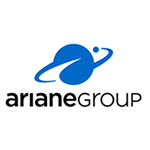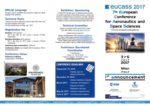In-flight icing: Trends and Challenges
In-flight icing is still a major hazard for aviation safety. Icing generally occurs when an aircraft goes through a cloud of supercooled droplets during takeoff, holding, or landing. The impinging droplets may freeze on the exposed surfaces leading to ice accretion on wings, nacelles, tail, empennage, antennas, etc. The ice may alter the aerodynamic performance of the aircraft, block engine inlets, or be shed and damage engines, propellers, or structural components. To avoid or limit these undesirable effects, civil aircrafts are equipped with anti-icing or de-icing systems which prevent ice to accumulate on the most important exposed surfaces (wing leading edge, nacelle lip, etc.).
Recently the icing certification rules have been modified by the international aviation safety authorities, obliging aircraft and engine manufacturers to also take into account additional risks due to the presence in the atmosphere of ice crystals and supercooled large droplets (SLD). In the meantime, the need to strongly reduce the energy consumption of ice protection systems (IPS) has led industrials and researchers to study the potential interest of innovative technologies based on a combination of new electrical systems (ETIPS, EMIPS) and new ice phobic coatings.
The objective of the present workshop will be to present and discuss challenges and innovative solutions in simulation and technologies related to in-flight icing topics. Speakers coming from 10 different countries will present the latest progress of the research in the domains of icing physics, modeling of innovative ice protection systems, ice phobic materials, SLD phenomena, ice crystal icing, ice accretion numerical and experimental simulation.
This will be a unique opportunity to gather the international icing community – coming both from industry and academic institutions – and to discuss about challenges, recent advances and remaining gaps.
Agenda:
Day 1 pm: Innovative ice protection systems and technologies
Chairperson : Ph. Villedieu, ONERA – co-chairperson: E. Laurendeau, Poly Montréal, Canada
General introduction, P. Villedieu, ONERA, France
- An Open Circuit Wind Tunnel to characterize Anti-Icing Systems, A. Esposito, Univ. Napoli, Italy
- Scientific and technological challenges with durable ice phobic coatings, E. Bonaccurso, Airbus Surface Technology Dept., Germany
- Icephobic Performance of Superhydrophobic Coatings: A Numerical Analysis, A. Dolatabadi, Univ. Concordia, Canada
- Comparison of extensional and flexural modes for the design of piezoelectric ice protection systems, V. Budinger, ISAE-SUPAERO, France
- Prediction of rivulet transition in anti-icing applications, A. Gosset, Univ. A Coruña, Spain
- Experimental study of unsteady aerodynamic characteristics of transport aircraft in icing conditions, D. Ignatyev, TSAGI
Day 2 am: Icing modeling and numerical simulation tools
Chairperson: E. Bonacurso, Airbus, Germany – co-chairperson: M. Potapczuk, NASA, USA
- Ice Accretion Roughness Measurements and Modeling, S. McClain, Univ Baylor, USA
- Accounting for wall roughness effects in turbulence models : a wall function approach, F. Chedevergne, ONERA, France
- Multi-Layer Icing Methodologies for Conservative Ice Growth, E. Laurendeau, Polytech. Montréal, Canada
- 3D ice accretion modeling using an integral boundary layer method, G. Blanchard, ONERA, France
- Modeling of the reemitted droplets on a small scale rotating fan model: exp. vs num. results, C. Laurent, ONERA, France
- Icing simulations on engine intake, N. Ugur, Univ. METU, Turkey
- Overview of NASA icing research, M. Potapczuk, NASA, USA
Day 3 pm: New icing conditions (SLD, mixed phase, ice crystals)
Chairperson: C. Tropea, TU Darmstadt – co-chairperson: S. McClain)
- Physics of SLD Impact and Solidification, C. Tropea, TU Darmstadt
- Experimental investigation of SLD impact phenomena, P. Berthoumieu, ONERA
- From high altitude clouds to an icing wind tunnel: en route to understand ice crystal icing, S. Bansmer, TU Braunschweig
- Experimental and theoretical investigations of solid-phase ice accretion, A Miller, TSAGI
- Mixed phase icing modeling on aircraft engine intakes and air data probes with TAICE 3D, E. Ayam, Univ. METU, Turkey
- Research on Aircraft In-flight Icing Detection Method, Di Ding, CARDC, China
- Round table about challenges, main recent advances and remaining gaps
Wednesday July 5th after a short session Aeroacoustic II will be held a mini workshop:
Mitigation of the Engine Noise of Aircraft: Context and future challenges
From decades, the noise of aircraft engines has been dramatically reduced, mainly thanks to the double streams technology and the increasing of the By-Pass-Ratio (BPR).
On one hand, the regulations are more and more stringent (Chapter 14 edicted by the OACI will be applied in Dec 2017), on the other hand the pressure on the airlines companies and the manufacturers becomes more and more important (Traffic grows by roughly 5% per year).
During the take-off phase the engine noise (jet & fan) is still the major component in the EPNdB produced by an aircraft. For landing phase, the airframe noise (landing gear & highlift devices) become comparable to the overall engine noise. The engine noise reduction at source is still a way to mitigate the sound pressure level generated by an aircraft but the BPR increase will find a limit because of the size of the turbofan. Others noise technologies reduction, passive and active, are in development in the research centers as well as the industrial companies.
Denis Gély, engineer expert in acoustics at ONERA, will give a short talk on these aspects and then, a large discussion will be opened on topics interesting the participants..













